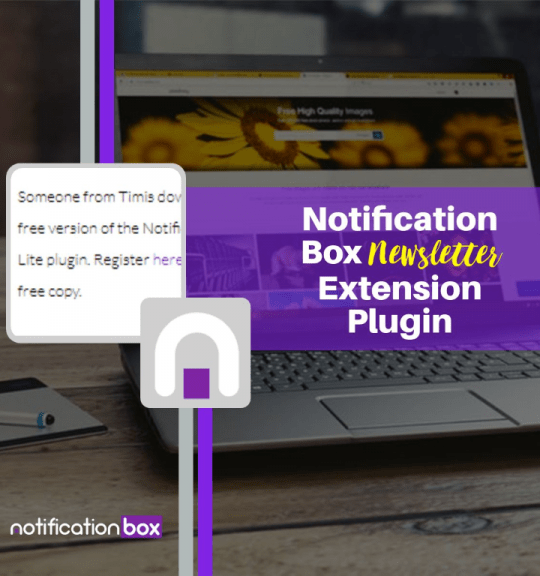Blog
Digital Medical Boards and Notification Box: Enhancing Patient Information
In the rapidly evolving landscape of healthcare, the integration of technology has become paramount in enhancing patient care and communication. Among the most innovative tools emerging in this domain are digital medical boards and notification boxes. These digital platforms serve as vital communication channels within healthcare facilities, providing real-time information to patients and their families.
Digital Medical Boards are essentially electronic displays that convey important messages, updates, and educational content, while notification boxes serve as alert systems that can inform patients about critical information or changes in their care. The transition from traditional paper-based communication to digital formats marks a significant shift in how healthcare providers interact with patients. Digital medical boards not only streamline the dissemination of information but also enhance the overall patient experience by making vital information more accessible and engaging.
As healthcare organizations strive to improve patient satisfaction and outcomes, the adoption of these digital tools is becoming increasingly prevalent, paving the way for a more informed and connected patient population.
Key Takeaways
- Digital medical boards and notification boxes are revolutionizing the way patient information is accessed and communicated in healthcare settings.
- The benefits of digital medical boards include easy access to patient information, improved accuracy, and efficiency in healthcare delivery.
- Digital medical boards enhance patient communication with healthcare providers by providing a platform for secure messaging and real-time updates on patient status.
- Notification boxes play a crucial role in patient information by providing alerts for important updates, reminders, and notifications for both patients and healthcare providers.
- Ensuring patient privacy and security with digital medical boards is essential, and measures such as encryption and access controls are implemented to protect sensitive information.
Benefits of Digital Medical Boards for Patient Information
Digital medical boards offer a multitude of benefits that significantly enhance the way patient information is presented and consumed. One of the primary advantages is the ability to provide real-time updates. Unlike static paper boards that require manual updates, digital boards can be modified instantly to reflect changes in schedules, treatment plans, or important announcements.
This immediacy ensures that patients and their families are always informed about their care, reducing anxiety and uncertainty during hospital stays. Moreover, digital medical boards can be customized to cater to diverse patient needs. For instance, they can display information in multiple languages or incorporate visual aids for patients with varying levels of health literacy.
This adaptability not only fosters inclusivity but also empowers patients by providing them with the information they need to make informed decisions about their health. Additionally, the engaging nature of digital content—such as videos, animations, and interactive elements—can enhance understanding and retention of critical health information.
How Digital Medical Boards Enhance Patient Communication with Healthcare Providers

Effective communication between patients and healthcare providers is essential for optimal care delivery. Digital medical boards play a crucial role in bridging the communication gap by serving as a centralized hub for information sharing. By displaying key messages from healthcare providers, such as treatment protocols, medication instructions, and discharge plans, these boards facilitate a clearer understanding of care processes.
This transparency not only helps patients feel more involved in their treatment but also encourages them to ask questions and seek clarification when needed. Furthermore, digital medical boards can foster a sense of community among patients. By showcasing testimonials, success stories, or educational content related to health management, these boards can create an environment where patients feel supported and motivated.
This communal aspect can be particularly beneficial in settings such as waiting rooms or shared patient areas, where individuals may feel isolated or anxious. By promoting interaction and engagement through digital content, healthcare providers can enhance the overall patient experience and encourage proactive participation in their health journey.
The Role of Notification Box in Patient Information
The notification box is an integral component of digital medical boards, serving as a dynamic alert system that keeps patients informed about critical updates. These notification boxes can be programmed to display urgent messages, such as changes in appointment times, medication reminders, or alerts regarding potential health risks. By providing timely information in a visually accessible format, notification boxes help ensure that patients are aware of important developments that may affect their care.
In addition to conveying urgent messages, notification boxes can also serve educational purposes. For example, they can display tips for managing chronic conditions or reminders about preventive health measures. This dual functionality not only enhances patient awareness but also promotes a culture of health literacy within healthcare facilities.
Ensuring Patient Privacy and Security with Digital Medical Boards
As healthcare organizations increasingly adopt digital solutions, ensuring patient privacy and security becomes paramount. Digital medical boards must comply with regulations such as the Health Insurance Portability and Accountability Act (HIPAA) to protect sensitive patient information. This compliance involves implementing robust security measures to safeguard data from unauthorized access or breaches.
To maintain patient confidentiality while utilizing digital medical boards, healthcare providers can employ various strategies. For instance, displaying only non-identifiable information on public-facing boards can help mitigate privacy concerns. Additionally, access controls can be established to limit who can update or modify content on these boards.
By prioritizing patient privacy and security, healthcare organizations can foster trust among patients while reaping the benefits of digital communication tools.
Integrating Digital Medical Boards into Electronic Health Records

The integration of digital medical boards with electronic health records (EHR) represents a significant advancement in healthcare communication. By linking these two systems, healthcare providers can ensure that the information displayed on digital boards is accurate and up-to-date. This integration allows for seamless updates based on real-time data from EHRs, ensuring that patients receive consistent messaging regarding their care.
Moreover, integrating digital medical boards with EHRs can enhance care coordination among multidisciplinary teams. For example, if a patient’s treatment plan changes due to new test results or consultations with specialists, this information can be instantly reflected on the digital board. This level of synchronization not only improves communication among healthcare providers but also ensures that patients are kept informed about their care journey at every step.
Challenges and Limitations of Digital Medical Boards and Notification Box
Despite the numerous advantages of digital medical boards and notification boxes, there are challenges and limitations that healthcare organizations must navigate. One significant challenge is the initial investment required for implementing these technologies. The costs associated with purchasing hardware, software, and ongoing maintenance can be substantial, particularly for smaller healthcare facilities with limited budgets.
Additionally, there may be resistance from staff who are accustomed to traditional communication methods. Training staff to effectively utilize digital boards and notification systems is essential for successful implementation; however, this process can be time-consuming and may require ongoing support. Furthermore, ensuring that all staff members are proficient in using these tools is crucial for maintaining consistent messaging across the organization.
The Future of Digital Medical Boards and Notification Box in Healthcare
Looking ahead, the future of digital medical boards and notification boxes in healthcare appears promising as technology continues to advance. Innovations such as artificial intelligence (AI) and machine learning could further enhance the capabilities of these tools by enabling personalized content delivery based on individual patient needs and preferences. For instance, AI algorithms could analyze patient data to tailor messages that resonate with specific demographics or health conditions.
Moreover, as telehealth becomes increasingly prevalent, digital medical boards could evolve to support remote patient engagement. By integrating virtual consultations with digital communication tools, healthcare providers could create a cohesive experience for patients regardless of their location. This evolution would not only enhance accessibility but also empower patients to take an active role in managing their health.
In conclusion, digital medical boards and notification boxes represent a transformative shift in how healthcare organizations communicate with patients. By providing real-time information, enhancing communication between patients and providers, ensuring privacy and security, and integrating with electronic health records, these tools have the potential to significantly improve patient experiences and outcomes. As technology continues to evolve, embracing these innovations will be essential for healthcare organizations striving to meet the needs of an increasingly informed and engaged patient population.
In a related article, Notification Box Lite is now live on the WordPress Plugin Directory, offering users a convenient way to enhance their websites with customizable notification boxes. This tool can be used to display important information to patients on digital medical boards, improving communication and providing valuable updates. To learn more about how Notification Box can be utilized for displaying banner ads and other notifications, check out notificationbox.
com/using-notification-box-to-display-banner-ads/’>this article.
FAQs
What are digital medical boards and notification boxes?
Digital medical boards and notification boxes are technological tools used in healthcare settings to enhance patient information and communication. They are digital displays or screens that provide real-time information to patients and healthcare providers, such as appointment reminders, medication schedules, and educational materials.
How do digital medical boards and notification boxes enhance patient information?
Digital medical boards and notification boxes enhance patient information by providing real-time updates and reminders about their healthcare needs. They can display personalized information such as upcoming appointments, medication schedules, and educational materials to help patients stay informed and engaged in their care.
What are the benefits of using digital medical boards and notification boxes in healthcare settings?
Some benefits of using digital medical boards and notification boxes in healthcare settings include improved patient engagement, better communication between patients and healthcare providers, reduced wait times, and increased efficiency in delivering healthcare information.
Are digital medical boards and notification boxes secure for patient information?
Digital medical boards and notification boxes can be secure for patient information if they are designed and implemented with proper security measures in place. This may include encryption, user authentication, and compliance with healthcare privacy regulations such as HIPAA.
How are digital medical boards and notification boxes used in healthcare settings?
Digital medical boards and notification boxes are used in healthcare settings to display important information to patients, such as appointment reminders, medication schedules, and educational materials. They can be placed in waiting areas, exam rooms, and other areas where patients and healthcare providers interact.
BUY NOW
-
Sale!

Agency License – Notification Box – WordPress Plugin
Original price was: $230.00.$150.00Current price is: $150.00. Add to cart -
Sale!

Unlimited License – Notification Box Pro – WordPress Plugin
Original price was: $79.00.$60.00Current price is: $60.00. Add to cart -

Single License – Notification Box Pro – WordPress Plugin
$39.00 Add to cart







